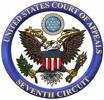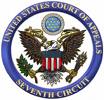Permission to Skip to the Chase
In United States v. Booker, the Supreme Court held that the mandatory federal sentencing guidelines violated a defendant’s Sixth Amendment right to trial by jury. As a remedy, the Court excised the statutory provision, 18 U.S.C. § 3553(b), requiring the district court to impose a sentence within the guideline range, thereby rendering the guidelines effectively advisory. Under Booker‘s advisory guideline regime, district courts must still calculate and consider the guidelines, but are free to impose a reasonable sentence above or below the range based on the other sentencing factors set forth in 18 U.S.C. § 3553(a).
So, sentencing is now a two-step process. (In some circuits, it’s three steps, but let that pass.) The court must first calculate the guideline range, just as it did before Booker, and then at step two determine an appropriate sentence in light of all the statutory factors.
But guideline calculations can be quite complex. The Guidelines Manual approaches 600 pages, and studies have shown that, depending on who is doing the calculating, the same set of facts can produce divergent guideline ranges. (See Professor O’Hear’s article, “The Myth of Uniformity,” 17 Fed. Sent. Rep. 249, for more on this.) Must the court, post-Booker, still resolve all disputed guideline issues, even though it has settled on an appropriate sentence under the statutory factors? Last week, in United States v. Sanner, the Seventh Circuit addressed this question.


